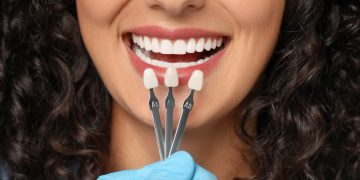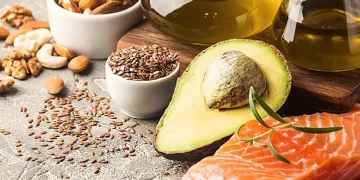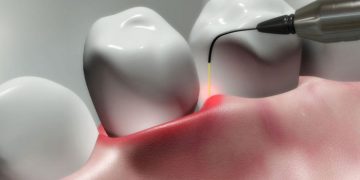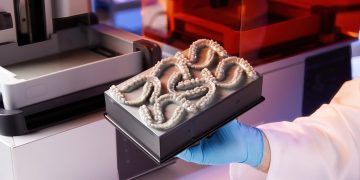Introduction
Maintaining good oral health is crucial for overall well-being, and one of the most effective ways to prevent dental issues like gum disease is by taking proactive care of your gums. While brushing, flossing, and regular dental visits are essential, your diet plays a significant role in the health of your gums. Many people may not realize that the foods you eat can directly affect the health of your gums. Specifically, fiber-rich foods offer numerous benefits to your gum health, reducing the risk of gum disease and enhancing overall oral hygiene. But how exactly does fiber contribute to gum health? Can increasing fiber in your diet actually prevent gum disease?
In this article, we will delve into the ways fiber-rich foods can help prevent gum disease, discussing how they contribute to cleaning teeth, stimulating gum health, reducing plaque buildup, and even offering additional benefits for your oral well-being. By the end of this piece, you’ll have a better understanding of why incorporating more fiber into your diet can play a crucial role in your overall oral care routine.
How Fiber-Rich Foods Clean Teeth and Stimulate Gums
Gum disease, which includes conditions like gingivitis and periodontitis, is caused primarily by bacteria that accumulate on the teeth and gums. These bacteria form plaque, a sticky film that can irritate and inflame the gums. Left untreated, plaque hardens into tartar, leading to more severe gum disease. While traditional oral care practices like brushing and flossing are critical in removing plaque and preventing gum disease, fiber-rich foods also contribute in unique ways to this process.
1. Natural Scrubbing Action of Fiber
One of the key benefits of fiber-rich foods is their ability to help “scrub” teeth clean while you eat. Foods like apples, carrots, celery, and other raw vegetables are fibrous, meaning they require a significant amount of chewing. This chewing action has a natural scrubbing effect on the teeth, helping to dislodge food particles and plaque that may be stuck between the teeth or along the gum line. As you chew, these foods act like a natural toothbrush, gently removing plaque without the need for abrasive or harsh scrubbing. This can reduce the overall plaque buildup that contributes to gum disease.
In addition, the chewing process stimulates the production of saliva, which is crucial for maintaining a clean mouth. Saliva helps neutralize acids in the mouth, wash away food particles, and promote the remineralization of tooth enamel, providing an additional layer of protection against plaque buildup and gum disease.
2. Stimulation of the Gums
Chewing fiber-rich foods doesn’t just help clean the teeth; it also stimulates the gums. The act of chewing helps increase blood circulation to the gums, promoting healthy gum tissue. This increased circulation can help keep the gums strong and healthy, reducing the risk of inflammation and infection. Healthy gums are less likely to become inflamed or infected by bacteria, which means a lower risk of gum disease.
Moreover, the physical action of chewing fiber-rich foods helps massage the gums, encouraging them to stay firm and healthy. This stimulation can prevent the gums from receding, a common symptom of gum disease, and can even help reverse mild gingivitis in the early stages.

The Link Between Fiber and Reduced Plaque Buildup
Plaque is the primary cause of gum disease. When plaque is not properly removed from the teeth, it hardens into tartar, which can only be removed by a dental professional. Plaque buildup is responsible for inflaming and irritating the gums, leading to gingivitis, the earliest stage of gum disease. If left untreated, gingivitis can progress to more serious forms of gum disease, including periodontitis, which can result in tooth loss.
Fiber-rich foods can play a vital role in reducing plaque buildup. As mentioned earlier, foods like apples, carrots, and celery help to physically remove plaque from the teeth by scrubbing and dislodging it during chewing. But the benefits of fiber go beyond just mechanical cleaning. Fiber also promotes better saliva production, which helps wash away food particles and reduce the acidic environment that allows plaque to form.
1. Saliva Production and Plaque Control
Saliva plays an essential role in maintaining oral health. It helps neutralize acids that are produced by bacteria in the mouth, which can otherwise contribute to plaque buildup. When you eat fiber-rich foods, the chewing process stimulates saliva production, increasing the amount of saliva available to cleanse the mouth. This increase in saliva production helps wash away bacteria and food particles, further reducing the amount of plaque that accumulates on the teeth.
Additionally, saliva contains beneficial minerals like calcium and phosphate, which aid in remineralizing tooth enamel. By neutralizing acids and promoting remineralization, saliva helps to prevent the erosion of enamel, which is a precursor to plaque buildup and gum disease.
2. Fiber and the Prevention of Gingivitis
Gingivitis is the earliest and mildest form of gum disease. It occurs when plaque builds up along the gum line, causing the gums to become red, swollen, and bleed when brushing or flossing. Fiber-rich foods can help prevent gingivitis by reducing the amount of plaque that forms on the teeth. By regularly chewing fiber-rich foods, you can significantly reduce the buildup of plaque, which ultimately helps prevent gingivitis from developing.
Additional Benefits of Fiber for Overall Oral Health
Beyond its ability to reduce plaque buildup and prevent gum disease, fiber offers several other benefits that contribute to overall oral health. These benefits include improving the health of your teeth and gums, enhancing digestion, and even helping to combat bad breath.
1. Improved Digestion and Oral Health Connection
The health of your digestive system is closely linked to your oral health. In fact, studies have shown that individuals who maintain a healthy diet rich in fiber tend to experience better oral health. Fiber promotes regular bowel movements and ensures proper digestion, which can reduce the likelihood of acid reflux. Acid reflux is a condition where stomach acid travels back into the mouth, eroding the enamel and irritating the gums. By preventing acid reflux, a fiber-rich diet helps protect both your teeth and gums.
2. Combating Bad Breath
Bad breath, or halitosis, is often caused by the buildup of bacteria in the mouth. Plaque and food particles trapped between the teeth provide a breeding ground for these bacteria, leading to unpleasant odors. Fiber-rich foods like raw vegetables and fruits can help fight bad breath by removing food particles from the teeth and promoting saliva production. The increased saliva flow helps wash away bacteria and neutralize odors, leading to fresher breath.
3. Overall Health Benefits
A diet rich in fiber has numerous other health benefits that indirectly support oral health. Fiber helps regulate blood sugar levels, reduce inflammation, and support heart health. These benefits are important because inflammation is a major factor in the development of gum disease. By reducing systemic inflammation, a fiber-rich diet can help protect your gums and prevent gum disease from progressing.
Conclusion
Incorporating more fiber into your diet is a simple yet powerful way to maintain gum health and prevent gum disease. Fiber-rich foods help clean your teeth, stimulate your gums, reduce plaque buildup, and promote overall oral health. By regularly consuming fiber-rich foods like fruits, vegetables, whole grains, and legumes, you can keep your gums healthy, reduce your risk of gingivitis and periodontitis, and improve your overall oral hygiene.
Remember, a balanced diet that includes fiber-rich foods should be part of an overall oral care routine that includes brushing, flossing, and regular dental check-ups. If you’re looking to protect your gums and maintain a healthy smile for years to come, consider increasing your fiber intake as part of your daily diet.













































Discussion about this post